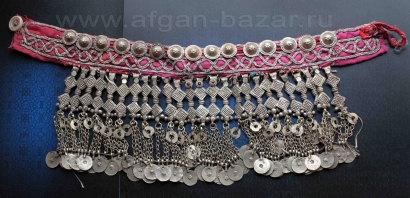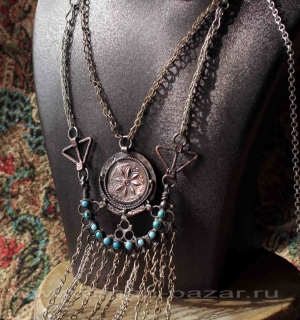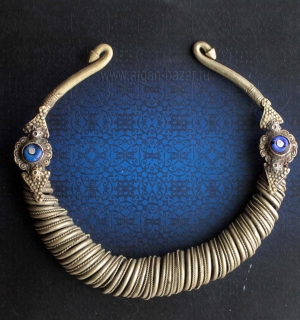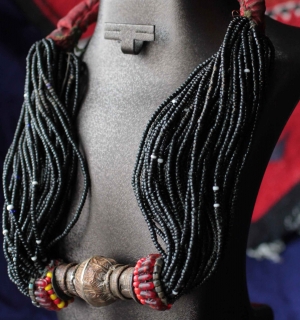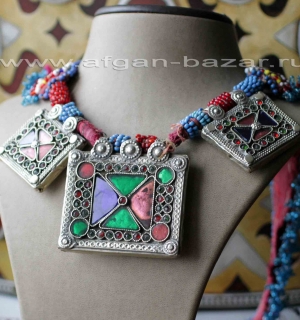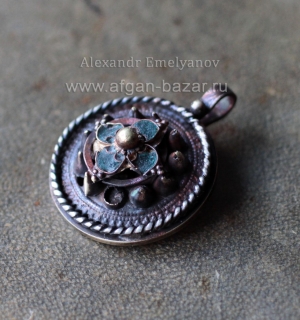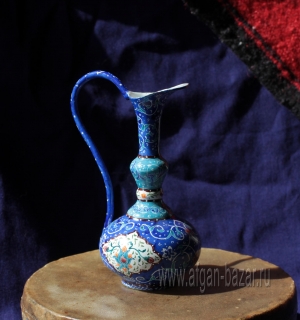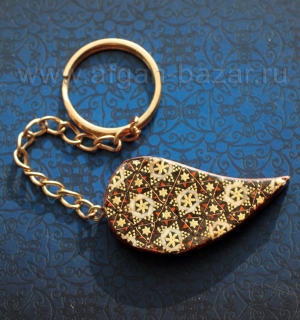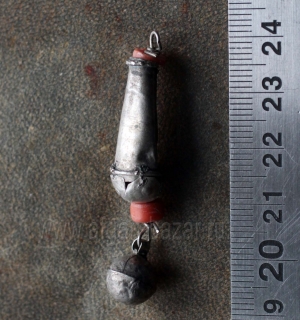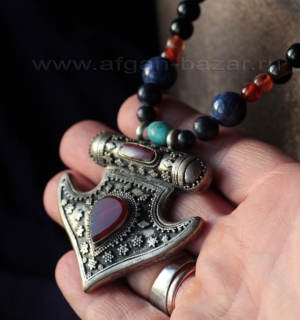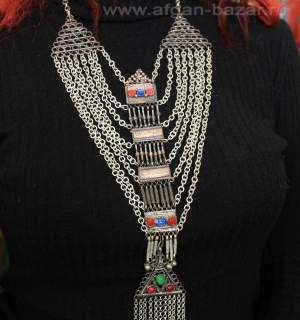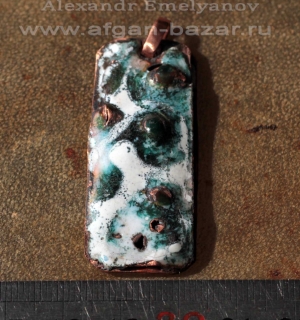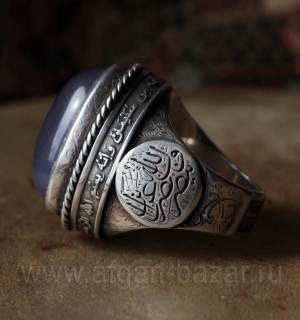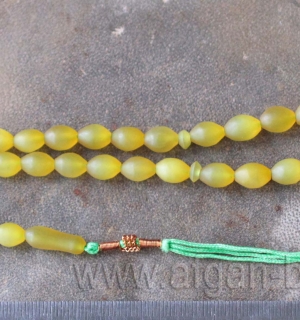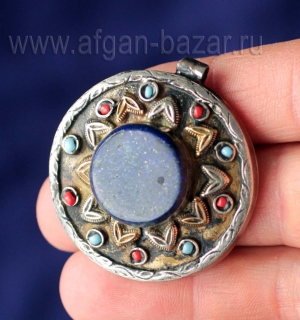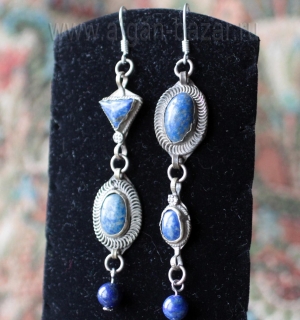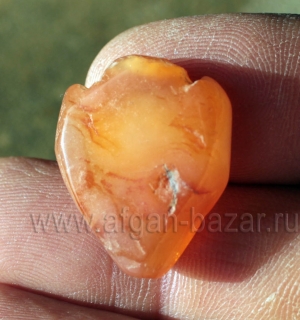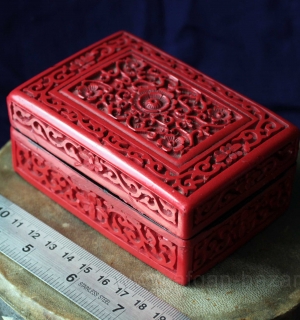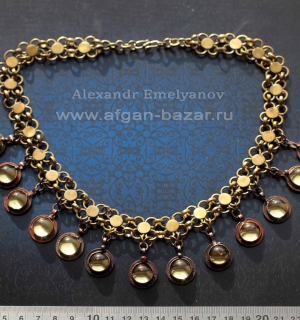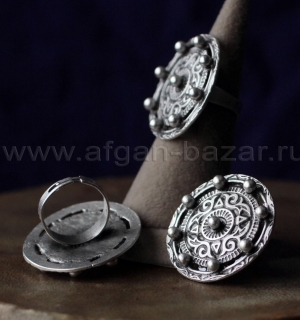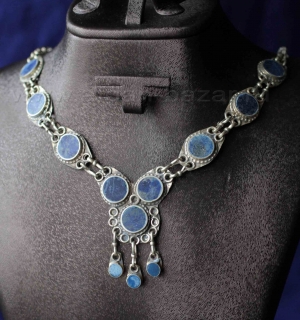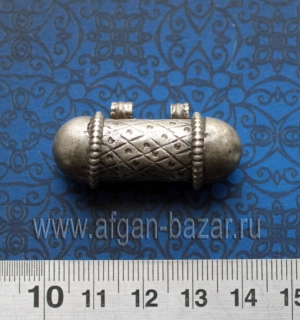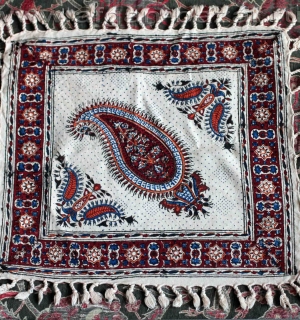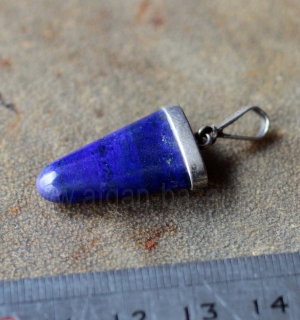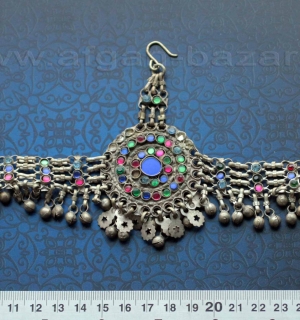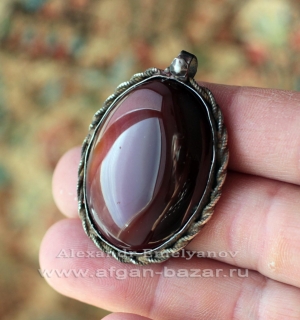Все детали колье сделаны вручную, в отличие от более поздних версий, где часть элементов делаются в виде реплик с помощью литья в землю.
Колье, сделанное в 20-м веке напоминает кушанские и греко-бактрийские образцы, относящиеся у концу 2-го века до нашей эры, найденные при раскопках древнего поселения Тилля-тепе (перс. طلا تپه, «золотой холм») на территории северного Афганистана.

Vintage Afghan Pashtoon Kuchi Tribal Choker "Djodani".
Collectible.
Afghanistan or Pakistan, Kuchi Tribes.
Mid-Second half 20th century.
Material - Alpaca (Tribal alloy of mixed base metals), cotton base with cotton laces, 100% handmade
Lenght of the Necklace - 400 mm. (16 ")
Wide with dangles - 130 mm. (5 ")
Weight - 260 g. (9 Oz)
The classical version of the so - called" Pashtun chokers " - a women's neck necklaces, widespread to this day in the South-West of Afghanistan and the Pashtun territories of Pakistan (Waziristan).
All the details of the necklace are made by hand, unlike later versions, where some of the elements are made in the form of replicas by casting into the ground.
The necklace made in the 20th century resembles Kushan and Greco-Bactrian samples dating back to the end of the 2nd century BC, found during the excavations of the ancient settlement of Tillya-tepe (Persian. "golden hill") on the territory of northern Afghanistan.
Литература и аналоги:
Afghanistan. Hidden Treasures from the National Museum, Kabul - Washington: “National geographic society” 2009. - 303p.
Wolf Dieter Seiwert. Jewellery from the Orient. Treasures from the Bir Collection. / Wolf-Dieter Seiwert – Stuttgart: Arnoldshe 2009 – p. 178.
3. Karolina Krzywicka. Ethnic Jewellery of Afghanistan. From theAsia and Pacific Museum in Warsaw - Warzawa: 2012. - p. 78-79.
4. Jean et Danielle Bourgeois. Les signeurs d`asyana. Nomades contrebandiers d`Afghanistan. / Bourgeois, Jean et Danielle - France: Flammarion, 1972. – p. 49.


